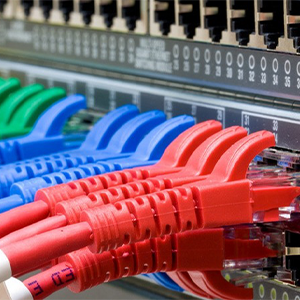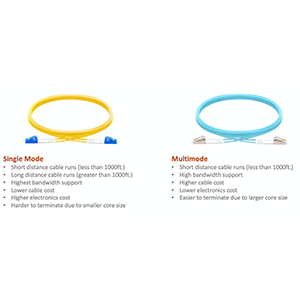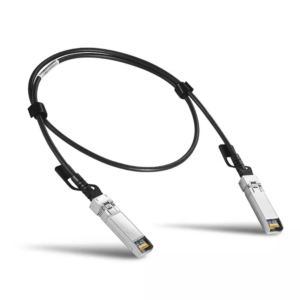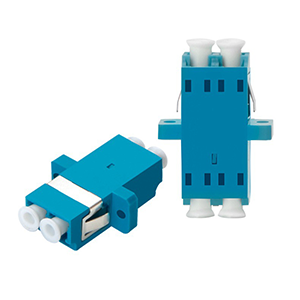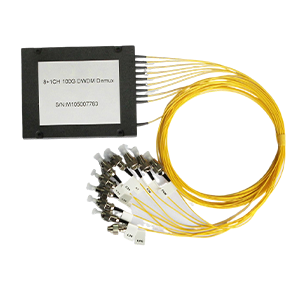Ethernet cables undoubtedly play an important role in networking. This article will compare the technical characteristics of CAT8 and CAT6 Ethernet cables. We will first define the physical structure and technical standards of CAT8 Ethernet cable and explain its key performance in providing high-speed transmission. Next, we will outline the physical characteristics and technical specifications of CAT6 Ethernet cable and illustrate its wide range of applications in existing networks.
We will compare the two in terms of bandwidth, transmission rate, noise suppression, etc., and analyze the significant improvement in technical indicators of CAT8 compared to CAT6. In addition, we will explain whether the physical interfaces of the two types of cables are compatible and explain how to make a smooth transition when upgrading the network. Finally, we will analyze the applicable scenarios based on network bandwidth, transmission distance and other factors, and provide suggestions for selecting CAT8 and CAT6 cables in different applications.

CAT8 Ethernet Cable Overview
Let me give you a brief introduction to the basic situation of CAT8 Ethernet cable, including its physical structure, technical standards and key performance in providing high-speed transmission.
Definition of CAT8 Ethernet cable:
(1) Physical structure:
- CAT8 Ethernet cable usually consists of 4 pairs of twisted copper wires, for a total of 8 conductors.
- Each pair of copper wires is wrapped with special insulation material and has a metal isolation shield.
- The outer layer of the overall cable also has a protective plastic sheath.
(2) Technical standards:
- CAT8 cable complies with TIA/EIA-568-C.2-1 standard and belongs to Category 8 of Ethernet transmission media.
- This standard specifies the technical requirements for CAT8 cables in terms of frequency, transmission rate, signal integrity, etc.
CAT8 cable provides key performance for high-speed transmission:
(1) Transmission bandwidth:
- The theoretical bandwidth of CAT8 cable can reach 40Gbps, which is 4 times that of previous CAT6A.
- Able to easily support new generation high-bandwidth Ethernet applications, such as 400GbE.
(2) Transmission distance:
- The longest transmission distance of CAT8 cable can reach 30 meters, which is significantly higher than the 15 meters of CAT6A.
- Meet the distance requirements of large data centers, high-performance computing and other applications.
(3) Anti-interference performance:
- CAT8 cable adopts stricter insulation and shielding design, which has stronger anti-electromagnetic interference ability.
- Ensure signal integrity and reliability during high-speed transmission.
(4) Signal integrity:
- CAT8 cable has tighter control over signal distortion and noise levels.
- It can ensure that Ethernet signals will not suffer serious distortion during high-speed transmission.
In short, CAT8 Ethernet cable has significantly improved compared to the previous CAT6A and CAT7 standards in key parameters such as bandwidth, transmission distance, anti-interference and signal integrity. These performance characteristics enable it to well support the development needs of future high-speed Ethernet applications.
CAT6 Ethernet Cable Overview
Let me give you a brief introduction to the basic situation of CAT6 Ethernet cable, including its physical characteristics, technical indicators and wide application in existing networks.
Basic overview of CAT6 Ethernet cable:
(1) Physical structure:
- CAT6 cable consists of 4 pairs of twisted copper wires, with a total of 8 conductors.
- Each pair of copper wires is individually wrapped with insulating material and shielded with metal foil or mesh.
- The outer layer of the overall cable is wrapped by a protective plastic sheath.
(2) Technical indicators:
- CAT6 cable complies with TIA/EIA-568-B.2-1 standard and belongs to Category 6 of Ethernet transmission media.
- The standard stipulates the technical requirements for CAT6 cables in terms of frequency, transmission rate, noise suppression, etc.
(3) Transmission performance:
- The theoretical bandwidth of CAT6 cable can reach 1000Mbps (1Gbps), which is twice that of CAT5e.
- The maximum transmission distance is 100 meters, which can meet the needs of most small and medium-sized networks.
Wide application of CAT6 cables in existing networks:
(1) Enterprise network backbone:
- CAT6 cables are widely used in LAN backbone transmission within enterprises.
- Able to carry high-speed services such as gigabit Ethernet to meet the needs of corporate internal networks.
(2) Office environment wiring:
- CAT6 cables are usually used for network cabling in offices, conference rooms, etc.
- Provides stable and high-speed data transmission to support various internal application needs of the enterprise.
(3) Home network access:
- Broadband fiber-to-the-home (FTTH) networks based on CAT6 cables are gradually becoming popular.
- Able to provide high-speed and stable Internet access services to home users.
(4) Data center applications:
- CAT6 cables are widely used in equipment-to-equipment networks within data centers.
- As a media that carries high-speed interconnection between storage, servers and other devices.
In general, CAT6 Ethernet cable has become one of the mainstream choices in the current construction of small and medium-sized wired networks due to its excellent transmission performance and wide applicability. It has extensive and in-depth applications in various application scenarios such as enterprises, homes, and data centers.
Key differences between CAT8 and CAT6 Ethernet cables
Let me give you a detailed comparison of the main technical indicators of CAT8 and CAT6 Ethernet cables, as well as the significant improvement in performance of CAT8 compared to CAT6.
Comparison of the main technical indicators of CAT8 and CAT6 cables:
(1) Bandwidth and transmission rate:
- The theoretical bandwidth of CAT8 cable can reach 40Gbps, which is 40 times that of CAT6.
- CAT8 supports ultra-fast Ethernet standards such as 400GbE, while CAT6 only supports 1GbE.
(2) Transmission distance:
- The maximum transmission distance of CAT8 cable can reach 30 meters, which is significantly better than CAT6’s 100 meters.
- CAT8 is suitable for application scenarios such as large data centers and high-performance computing.
(3) Noise suppression performance:
- CAT8 cable adopts stricter insulation and shielding design, which has stronger anti-interference ability.
- The crosstalk and NEXT indicators of CAT8 are better than CAT6.
(4) Signal integrity:
- CAT8 cable has lower signal distortion and noise levels at high frequencies.
- It can ensure that Ethernet signals maintain good integrity during high-speed transmission.
Significant performance improvement of CAT8 compared to CAT6:
(1) Bandwidth and speed are significantly improved:
- CAT8’s 40Gbps bandwidth is 40 times that of CAT6 and can support new standards such as 400GbE.
- Laid the foundation for the development of ultra-high bandwidth applications in the future.
(2) The transmission distance is significantly increased:
- The 30-meter transmission distance of CAT8 cable is three times that of CAT6.
- Meet the needs of long-distance wiring in application scenarios such as large computer rooms.
(3) Anti-interference performance is greatly improved:
- CAT8 has better shielding and noise suppression effects than CAT6, and is more suitable for harsh electromagnetic environments.
- Ensure that high-speed signals will not suffer severe interference and distortion during long-distance transmission.
(4) Signal integrity is more guaranteed:
- The high-speed signal quality control of CAT8 cable is more stringent.
- Avoid the problem of key signal loss or distortion in high-speed Ethernet transmission.
In general, CAT8 Ethernet cable has obvious technical advantages in supporting future high-speed Ethernet applications with its significant advantages in key technical indicators such as bandwidth, transmission distance, anti-interference and signal integrity. It is an obvious upgrade and replacement of the CAT6 standard.
CAT8 and CAT6 Ethernet cable compatibility
Let me analyze in detail the compatibility issues of CAT8 and CAT6 Ethernet cables in terms of physical interfaces and network upgrades.
Physical interface compatibility for CAT8 and CAT6 cables:
(1) Physical structure differences:
- Both CAT8 and CAT6 cables use the basic structure of 8 cores/4 pairs of twisted copper wires.
- However, there are certain differences in details such as insulation materials and shielding design.
(2) Interface compatibility:
- CAT8 cable can be directly plugged into the RJ45 interface of CAT6 to achieve physical connection.
- However, due to the different internal structure of the cable, this direct connection cannot bring out the full performance of CAT8.
(3) Performance degradation:
- When a CAT8 device is connected to a CAT6 interface, the actual transmission performance will be degraded to the level of CAT6.
- Inability to take full advantage of the high bandwidth and low noise of CAT8 cable.
Smooth upgrade of CAT8 and CAT6 networks:
(1) Gradual transition:
- Introducing CAT8 equipment and cables into the existing CAT6 network requires a gradual upgrade.
- Avoid a one-time full switch to ensure the smooth operation of the network.
(2) Focus on upgrading key areas:
- First of all, CAT8 should be used for backbone network segments carrying high-speed services, such as inside data centers.
- For ordinary end-users, CAT6 cables can be temporarily reserved for use.
(3) Gradually replace the interface:
- During the upgrade process, the CAT6 RJ45 interface can be gradually replaced with the CAT8 standard interface.
- Ensure that CAT8 cable can take full advantage of its performance.
(4) Plan a complete transition plan:
- Develop a detailed network upgrade plan, including comprehensive considerations such as equipment updates and cable replacements.
- Ensure smooth transition between CAT8 and CAT6 network equipment to avoid compatibility issues.
In short, although CAT8 cables can be physically connected to CAT6 interfaces, in order to give full play to the technical advantages of CAT8, a gradual transition process is required when upgrading the network. Focus on the upgrade of backbone network segments and gradually adjust interface standards to ensure seamless connection between CAT8 and CAT6 equipment.
CAT8 and CAT6 cable selection in application scenarios
Let me analyze for you the applicability and selection suggestions of CAT8 and CAT6 Ethernet cables in different application scenarios based on key factors such as network bandwidth and transmission distance.
Application scenario analysis:
(1) Large data center:
- Having high requirements on bandwidth and transmission distance, CAT8 cable is more suitable.
- CAT8’s 40Gbps bandwidth and 30-meter long distance can meet the internal network needs of the data center.
(2) High performance computing environment:
- If you require extreme high speed and low latency, CAT8 cable is the best choice.
- CAT8’s high bandwidth and excellent signal integrity characteristics are very suitable for HPC applications.
(3) Enterprise LAN backbone:
- If medium-distance high-speed transmission is required, both CAT8 and CAT6 can meet this requirement.
- The performance advantages of CAT8 are more prominent, but the cost may be slightly higher than CAT6.
(4) Small and medium-sized office network:
- In most cases, CAT6 cable can fully meet the needs, and there is no need to choose CAT8.
- CAT6’s 100-meter transmission distance and 1Gbps bandwidth are sufficient to cover small and medium-sized office applications.
(5) Home broadband access:
- CAT6 cable can fully meet the needs of home broadband applications due to low network speed requirements.
- CAT8’s ultra-high-speed performance is difficult to play its advantages in this scenario.
Cable selection suggestions:
(1) Large bandwidth and long distance scenarios: Use CAT8 cable
- For applications such as data centers and HPC, CAT8 cable has better performance.
- It is recommended to give priority to CAT8 cable to give full play to its technical advantages.
(2) Medium bandwidth and medium distance scenarios: Either CAT8 or CAT6
- For applications such as enterprise LAN backbone, both CAT8 and CAT6 can meet the needs.
- You can weigh the factors such as budget and compatibility.
(3) Low bandwidth, short distance scenarios: Choose CAT6 cable
- For applications such as small and medium-sized offices and home broadband, CAT6 cables are sufficient.
- There is no need to choose ultra-high-performance CAT8 cables, CAT6 is more economical.
In short, when choosing CAT8 or CAT6 Ethernet cables, it is necessary to weigh the bandwidth, transmission distance and other requirements of the specific application scenario. In large bandwidth and long distance scenarios, CAT8 cables are the first choice; in ordinary small and medium-sized networks, CAT6 can also fully meet daily needs.
Summary
Rational selection of Ethernet cables is crucial to building a high-performance network. Our company has long been focusing on the research and development and production of network equipment and its supporting products, and has rich industry experience. Our CAT8 and CAT6 series cable products have reached the industry-leading level in terms of bandwidth and reliability, and can meet your demanding needs for high-speed network construction.
Whether you need to deploy in a data center, corporate office, or industrial automation scenario, we can provide you with customized Ethernet cable solutions. At the same time, our professional team will provide you with a full range of technical support, including on-site surveys, product recommendations, installation guidance, and maintenance suggestions. Contact us now to learn more about CAT8 and CAT6 Ethernet cables.
Cat8 vs Cat6 Ethernet Cable FAQ
Cat8 (Category 8) Ethernet cable is the latest and highest-performing copper-based Ethernet cable standard, designed to support data rates up to 40 Gigabit Ethernet.
Cat6 (Category 6) Ethernet cable is an older and more widely adopted standard, capable of supporting data rates up to 10 Gigabit Ethernet over shorter distances.
The main differences are that Cat8 offers higher bandwidth (up to 40 Gbps) and can support longer transmission distances (up to 30 meters) compared to Cat6 (up to 10 Gbps and 55 meters).
Cat8 cables have a larger diameter and more complex internal construction to support the higher frequencies, while Cat6 cables have a thinner and more flexible design.
No, Cat8 cables are not directly compatible with Cat6 ports. They require Cat8-specific ports and network equipment to take advantage of the higher performance.
Cat8 is primarily used in high-performance applications like data centers and server rooms, while Cat6 is more common in general office and home networking environments.
Cat8 cables are generally more expensive than Cat6 cables due to the advanced manufacturing process and materials required.
Cat8 cables may require more power and generate more heat due to the higher data rates, which can impact installation and cooling requirements.
Proper cable handling, termination, and strain relief are essential for both standards to ensure optimal performance and reliability.
The industry is already working on the next generation of Ethernet cable standards, such as proposed specifications for Cat9 and Cat10, to meet the ever-increasing bandwidth demands.

